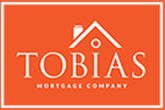
How To Get A Reverse Mortgage Loan
If you’re contemplating tapping into your home equity for financial stability, a reverse mortgage loan can be a viable solution. As a homeowner, this type of home loan offers you the opportunity to convert part of your home’s value into cash without the need to sell your property. This blog discusses how to get a reverse mortgage loan and addresses key steps and considerations to ensure a smooth process. Let’s dive in!
Steps to Follow for a Reverse Mortgage Loan
Understand What a Reverse Mortgage Loan is:
This home loan in Roseville is designed for seniors who own their homes outright or have significant equity in their homes, allowing them to borrow against the equity without making monthly payments. Instead, the loan is paid back when the homeowner sells the property, moves out permanently, or passes away. The loan amount is typically determined by the home value, the homeowner’s age, and the interest rate at the time of the loan.
Determine if You Qualify:
The first step in the reverse mortgage process is to confirm your eligibility. To apply for a reverse mortgage loan, you must:
– Be at least 62 years of age
– Own your home outright or have a low mortgage balance
– Occupy the property as your primary residence
– Maintain the property and continue paying property taxes and homeowner’s insurance
Research Lenders:
Once you’ve determined your eligibility, the next step is to find a reliable lender specializing in home loans or refinance in Roseville. Obtain quotes and compare the terms and fees offered by various lenders. Look for reviews and testimonials better to comprehend the lender’s reliability and customer satisfaction. Talking to family and friends who have experienced the process can also provide invaluable insights.
Attend a Counseling Session:
Before obtaining a reverse mortgage loan, you must attend a counseling session with a U.S. Department of Housing and Urban Development (HUD)-approved counselor. They will help you understand the financial implications, responsibilities, and potential alternatives to a reverse mortgage. After completing the counseling session, you will receive a certificate documenting your attendance.
Complete the Application Process:
With your desired lender identified and counseling completed, it’s time to apply for the reverse mortgage loan formally. You’ll need to provide personal identification, proof of homeownership, income documentation, and potentially a home appraisal. Your lender will then work with you to tailor the loan options to fit your unique financial situation and preferences.
Undergo a Financial Assessment:
As part of the application process, your lender will conduct a financial assessment to evaluate your ability to meet the ongoing financial obligations of the reverse mortgage loan. This assessment generally involves analyzing your income, credit history, monthly living expenses, property taxes, insurance, and other financial obligations.
Prep for Loan Closing:
Once approved, schedule a closing date to sign the final loan documents. The closing costs may include origination fees, third-party fees, and other relevant fees associated with the reverse mortgage process. Ensure to consult with your lender to understand each cost to avoid surprises.
Receive Your Loan Proceedings:
Upon closing, you will begin receiving your reverse mortgage loan proceeds through one of several disbursement options, such as a lump sum, monthly payments, or a line of credit. You can use these funds as necessary, whether for home improvements, medical expenses, or simply enhancing your retirement lifestyle. Remember that you must continue to meet the ongoing requirements of homeownership and stay current on tax and insurance payments.
